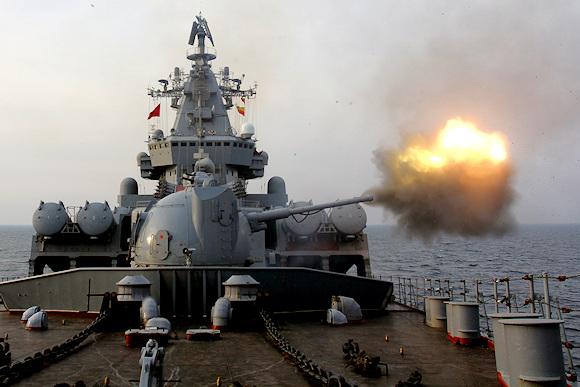For over 7 months the Russo-Ukrainian War has been devastating with unprecedented violence the territory of the former Soviet republic overlooking the Black Sea. Although rivers of ink have already been poured to describe the (partial) lessons learned so far in the course of the first great conventional war. With a world-wide scope since 1945, most of the analyzes in circulation generally deal with issues relating to land (and sometimes aerial) operations. The naval dimension, on the contrary, has up to now played the role of "Cinderella" in the discussion of the Ukrainian conflict even if, on closer inspection, instead it represents the most important one in an absolute sense. The current analysis will therefore have the task of rectifying this dangerous distortion and restoring the importance it deserves to naval warfare.
To better illustrate the concept, it will be enough to remember that the main reason that led the Russians to take possession of Crimea, during the convulsive events of 2014, was precisely the fear that, having passed Ukraine to the opposing camp following the events of euromaidan, they would have run the real risk of seeing their position in the Black Sea irreparably compromised, for Moscow the only access to the "warm seas" of the globe.
During the 8 years that separated 2014 from 2022, numerous crises and provocations that have opposed the Navy and the Ukrainian Coast Guard on the one hand to the Black Sea Fleet and the FSB Coast Guard on the other, have been consumed in the waters of the Black Sea and in the adjacent Sea of Azov, which the Russians have "closed" by building the strategic and notorious bridge over the Kerch Strait. All this has done nothing but raise the tension, increasing the chances that the real war could break out, as it then promptly happened.
The classic straw that broke the camel's back was the publication of the new Ukrainian naval strategy which foresaw (also with the generous contribution of the Western partners) in the next 10 years a massive "injection" of modern or updated shipping that should have included for as for the Ukrainian Navy: 2 class frigates Oliver hazard perry, 3 class patrol boats to Iceland, 6 class 40 PB patrol vessels Defiant, 10 patrol vessels of the class Sea Ark Dauntless, 2 SURC patrol boats (acronym for “Small Unit Riverine Craft”), 2 minesweepers of the class Sandown, 4 frigates of the class Volodymyr Velykyi, 2 frigates of the class Ada, 8 class fast missile ships barzan, 16 patrol vessels of the class Mark VI, 6 fast attack and landing ships of the class Centaur, in addition to an undefined number of self-piloted surface vessels and autonomous underwater vehicles and an even higher number of vessels of various displacement for the Ukrainian Coast Guard.
It is easy to understand that, if another 10 years had passed and Russia had procrastinated further giving Ukraine the opportunity to continue its naval rearmament plan, this (simultaneously with the rearmament of the land and air forces, as well as the entry into service of new strategic attack vectors in the form of ballistic and cruise missiles) would have posed a deadly threat not only to the Russian device in the Black Sea but also to the western and northern parts of the Caucasus and the Caspian Sea, which traditionally constitute the "belly springs ”of the Russian Federation, just as they were before for the Soviet Union and the Russian Empire.
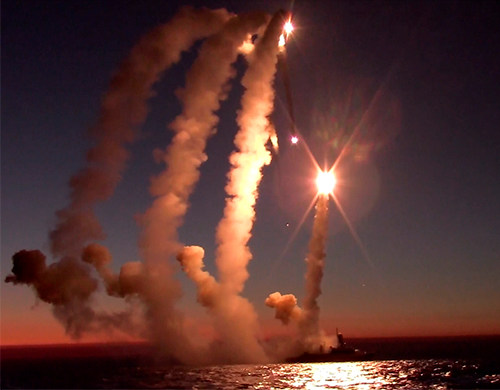 Just as naval issues have contributed significantly to tipping the scales in favor of military intervention, the deployment moves of the Russian Navy and the FSB Coast Guard in the months preceding the outbreak of the conflict have at the same time been the dramatic wake-up call. for the author of this analysis, as well as for a few others, that the crisis that was unfolding in the east was this time the definitive one that would certainly have led to an armed conflict.
Just as naval issues have contributed significantly to tipping the scales in favor of military intervention, the deployment moves of the Russian Navy and the FSB Coast Guard in the months preceding the outbreak of the conflict have at the same time been the dramatic wake-up call. for the author of this analysis, as well as for a few others, that the crisis that was unfolding in the east was this time the definitive one that would certainly have led to an armed conflict.
There are numerous interpretations that the Russian leadership's decision to launch the attack was made hastily and improvised when the attempt at coercion by "showing off the muscles" had failed, but in my humble opinion this is a simply unsustainable hypothesis.
Upon a careful analysis of the movements of the Russian Navy in the months between October 2021 and February 2022, it was very clear that Russia was engaged in the largest operation of concentration of naval forces in the Black Sea area since the disintegration period. of the Soviet Union. This is a very important point that it must be stressed over and over again, to the point of nausea, so that it remains impressed in the minds of readers, no matter if veterans or newbies: "The Navy is the most important and expensive military asset available to a country, whatever its size". It does not matter if it is a Navy made up of wooden vessels propelled by oars, as in the time of the ancient Greeks, Carthaginians and Romans, or a modern balanced Navy that aligns ultra-modern ships propelled by nuclear propulsion; the final outcome is the same.
It takes years, if not decades to build a modern balanced Navy, and it can be lost in days (or minutes!) If used recklessly. The Japanese know something that a Midway lost in a single day as many as 4 of their precious full-deck high-displacement aircraft carriers that had taken over 10 years to deploy. This is why throughout history, naval strategists have always been the ones who made the most important decisions following a purely "conservative" spirit where the taking of unnecessary risks is vigorously discouraged. This modus operandi also extends in peacetime since a substantial naval force engaged in military exercises must then spend a long period in dock for maintenance cycles that can last months or even years before it can become operational again.
That is why when, at the end of 2021, more detailed news began to arrive regarding the consistency of the naval force that the Russians were concentrating in the theaters of operations, I understood that this was the definitive signal that the storm was about to break out.
I said "theaters of operation" using the plural because, upon careful observation, the Russian strategy went far beyond the borders of the Black Sea and the Azov Sea. In order to create an external defense zone to provide better protection for the forces engaged against Ukraine, intimidate Turkey and dissuade NATO from directly intervening in the conflict, the Russians had deployed two naval battle groups in early February 2022. centered respectively around the missile cruiser "Marshal Ustinov", usually in force with the Northern Fleet, and the missile cruiser "Varyag" (opening photo) stationed at the Pacific Fleet. To complete the circle we must not forget that, facing Ukraine, there was instead the battle group of the missile cruiser “Moskva”, this instead usually assigned to the Black Sea Fleet even in peacetime.
It is interesting to note that the "Moskva", the "Marshal Ustinov" and the "Varyag" all belonged to the same class of Soviet-designed warships called "Project 1164 Atlant" but better known in the Western world as the "Slava class", from the name originally from "Moskva" at the time of entering service in the Soviet Navy (the word "Slavic" in Russian means "glory").
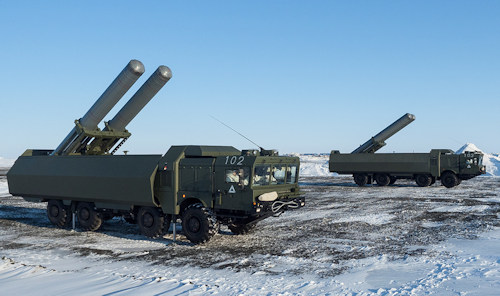 Hence, on the eve of the outbreak of the Russo-Ukrainian War, Russia had deployed between the Black Sea and the central and eastern Mediterranean well between battle groups centered on as many powerful missile cruisers and related destroyers, frigates, diesel submarines and ships of support to act as an escort. Everything was made even more formidable and stratified by the deployment of K-300P anti-ship missile systems Bastion-P (photo) both in the Crimean peninsula, in the Kuban territory and in the Taman peninsula to cover the Black Sea and the Azov Sea, and around the Khmeimim air base, located on the Syrian coast, to cover the eastern Mediterranean Sea .
Hence, on the eve of the outbreak of the Russo-Ukrainian War, Russia had deployed between the Black Sea and the central and eastern Mediterranean well between battle groups centered on as many powerful missile cruisers and related destroyers, frigates, diesel submarines and ships of support to act as an escort. Everything was made even more formidable and stratified by the deployment of K-300P anti-ship missile systems Bastion-P (photo) both in the Crimean peninsula, in the Kuban territory and in the Taman peninsula to cover the Black Sea and the Azov Sea, and around the Khmeimim air base, located on the Syrian coast, to cover the eastern Mediterranean Sea .
A further power multiplier was also given by the presence in the Crimean airports of no less than half of the aircraft assigned to the Russian Navy, as well as the deployment both in Crimea and in Khmeimim of Tupolev Tu-22M and Mig-31 rates to increase the anti-ship firepower. This led to the creation of an immense "A2 / AD bubble" with a defensive (towards the external forces of NATO), offensive (towards Ukraine) and deterrence (towards Turkey).
Inside the Black Sea, the Russians had also considerably strengthened the amphibious component reaching 13 ships by transferring 6 units usually assigned to the Baltic Fleet and the Northern Fleet. At the same time practically all the forces belonging to the Marine Infantry Corps (about 18.000 men) and the related heavy vehicles were deployed in the operational theater, among which the T-80BVM tanks, the most updated variant of the glorious T- 80 Soviet. It was clear that again the Russians were mustering forces for amphibious action in a big way against one or more targets located along the coast of Ukraine.
Likewise, the FSB Coast Guard had considerably strengthened the ranks of its ships in the area from a numerical point of view to support military operations in the Azov Sea area.
It should also be noted that the Russian military commands also had the option (later duly exercised) of involving the naval units assigned to the Caspian Flotilla, which had already had the opportunity to distinguish themselves on several occasions during the Russian military intervention. in Syria when they fired several salvoes of the embarked version of the 3M-54 missile Kalibr against targets located in the territories under the control of ISIS or anti-Assad rebels.
Finally, the strengthening of the Russian mechanism also involved elements that were so to speak "unconventional". Not many, in fact, paid attention to the fact that on the eve of the war, in order to strengthen the defenses of the naval bases (especially those of Sevastopol and Novorossysk), the admirals of Moscow had taken care to move their units of dolphins and combat belugas usually under the control of the GUGI, the naval research and reconnaissance department.
At the opening of hostilities, on February 24, 2022, the forces headed by the Black Sea Fleet, the Caspian Flotilla and the FSB Coast Guard launched a concentric attack against Ukrainian naval targets, exploiting both numerical and power superiority. of fire. These attacks took place both by firing cruise missile salvoes and by resorting to naval artillery fire at coastal targets.
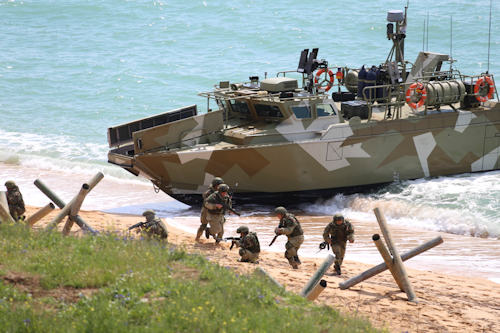
Contrary to what was stated in the early hours of the war, no landings were detected in the Odessa area, probably due to the not at all to be underestimated danger posed by Ukrainian naval mines.
In that area, therefore, the Russians limited themselves to erecting a real naval blockade, simultaneously bombing the port infrastructures and taking control of the so-called "Island of the Snakes" ("Zmeiniy ostrov" in Russian) which was taken to cannoned by the cruiser “Moskva” and the patrol vessel “Vasily Bykov” before a nucleus of marines and naval Spetsnaz operators landed there taking prisoners the men of the garrison belonging to the Ukrainian Border Guard corps.
An amphibious landing instead took place on February 26 in the area between Melitopol and Berdyansk in support of the offensive of the Russian forces belonging to the 58a army of General Zusko set off to attack from Crimea. To date, the extent of the Russian amphibious operation that took place in the Azov Sea is not at all clear given that some sources describe it as a minor operation while others even speak that it involved half of the amphibious ships deployed. by the Russians on the occasion of the outbreak of the war. Whatever the real entity may have been, however, it seems that the coup has favored and not a little the development of Russian military operations in that precise quadrant, helping to undermine the Ukrainian defensive device in the area even if the Russians were able to fully claim a sort of "local victory" only on 20 May when the surrender of the defenders of the Azovstal steel complex actually led to the transformation of the Sea of Azov into a sort of "mare nostrum" in Russian sauce.
Be careful though! It is not to be believed that the end of Ukrainian conventional resistance in the area resulted in a cessation of the military activities of Moscow ships in the area. In fact, before the aforementioned area was conquered, the Ukrainians had had the opportunity to set up important minefields both on the beaches and in the surrounding waters, with the result of forcing the Russian forces, both land and naval, to detach men and means necessary to bring to completion of the related demining operations. In the course of one of these operations, the Russians lost a landing craft, which was blown on a naval mine, near the port of Berdyansk.
The same area was then the scene of one of the worst disasters for the Black Sea Fleet when, on March 24, the amphibious ship "BDK-65 Saratov" belonging to the "Project 1171 Tapir" class sank in port after having been devoured by a violent fire (following photo).
We had previously talked about this event in one of the past reports, but since then no new elements have emerged to help us shed light on what really happened to “Saratov”. The "official" version of the Ukrainian authorities and their Western supporters, but also of Russia itself, is that the "Saratov" was hit by a 9K79 OTR-21 missile Tochka Version Tochka-U (or from fragments of it) and that this led to a fire of the ammunition depot with related catastrophic consequences.
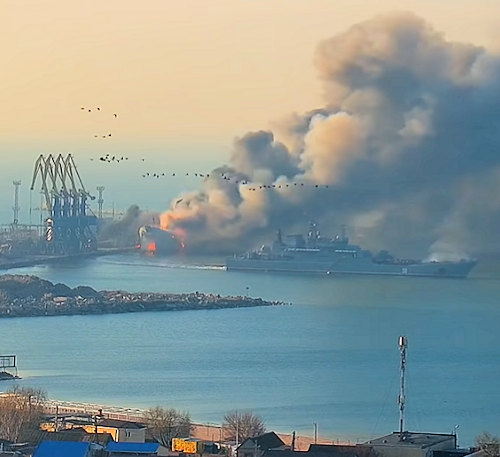 In my humble opinion, this reconstruction makes no sense, and indeed the images and videos relating to the event that abound online suggest a very different plot. Mind you, the attack on ships moored in port through the use of ballistic missiles is technically possible and indeed has been widely "theorized" (especially by the Iranians) in the context of asymmetric warfare. Plus the same Tochka-U, although no longer considered a "cutting-edge" weapon, it is still precise enough (here much depends on the operational assets) to obtain a center on a large target such as an amphibious ship belonging to the "Project 1171 Tapir" class.
In my humble opinion, this reconstruction makes no sense, and indeed the images and videos relating to the event that abound online suggest a very different plot. Mind you, the attack on ships moored in port through the use of ballistic missiles is technically possible and indeed has been widely "theorized" (especially by the Iranians) in the context of asymmetric warfare. Plus the same Tochka-U, although no longer considered a "cutting-edge" weapon, it is still precise enough (here much depends on the operational assets) to obtain a center on a large target such as an amphibious ship belonging to the "Project 1171 Tapir" class.
It should also be noted that the Ukrainians have indeed subjected the port of Berdyansk to fire from their missiles on several occasions Tochka both before and after March 24, but all of their missile sorties ended in nothing as their bombs went off target or were intercepted by Russian anti-aircraft and anti-missile systems S-300 and S-400.
Given that these attacks have occurred more than once, videos of these actions are widely available on the net, and by analyzing them it is possible to accurately identify the moment when a missile hits the inhabited center and explodes or when "only" the fragments fall. (which in any case cause significant damage to buildings!) as a result of the interception.
Well, having analyzed over and over again the videos of the action of 24 March, and having compared them with the others recorded before and after the event, I can say with absolute confidence that what is happening around and on the "Saratov" has NOTHING. to do with the effects of a missile attack. No whistle, followed by a roar, to signal a missile attack. No explosion to signal a hit on the ship. No fragments falling from the sky, not even near the port or on the water. All that is noticed, with a careful analysis of the sequences, is a fire that suddenly develops on board the ship, becoming more and more violent, up to envelop it completely. The absence of catastrophic explosions and the creation of a large column of dense black smoke also suggest that large quantities of fuel were stowed on board instead of ammunition as stated by the Russian version of the event report. Also present in the port at the time of the "Saratov bonfire" were two amphibious ships of the "Project 775 Ropucha" class: the "BDK-46 Novocherkassk" and the "BDK-64 Caesar Kunikov" which were in turn damaged by the flames they managed to get away avoiding worse consequences while the “Saratov” finally went down.
Several months after the incident, in July, the Russians declared that they had resurfaced the "Saratov" and had planned to tow it to Kerch, where the "Zaliv" shipyards are located. However, given the extent of the damage caused by both the violent fire and sea water during the sinking and subsequent stay on the seabed of the port of Berdyansk, it is very likely that investing time and money in the reconstruction of a ship that entered service 56 years ago is completely uneconomical and, consequently, the final decision will most likely pending in favor of its dismantling.
The current status of the "Novocherkassk" and "Caesar Kunikov" is not clear. Although both were damaged by the fire that destroyed the “Saratov”, they still managed to move away from the port of Berdyansk and were subsequently transferred to the dock for emergency repairs. What happened later is not clear, however, given that, according to some sources, the ships are currently stopped due to a lack of spare parts (the "Project 775 Ropucha" were built in Poland and, before the outbreak of the war, Warsaw would have supplied Moscow defective spare parts; but this news could very well be a sensational and elaborate "fake news") while according to the leaders of the Russian Navy, once the repairs were completed they would be back online.
Whatever the truth, even in the worst case scenario, given the state of mobilization of the industries belonging to the defense sector of the Russian Federation, it is in any case unlikely that the "Novocherkassk" and "Caesar Kunikov" will remain out of the game for a long time and I believe that sooner or later we will see them in action again.
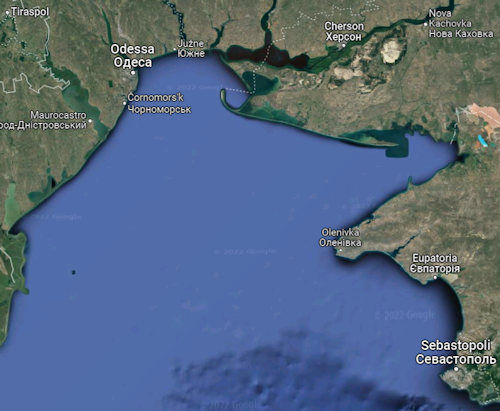 In addition to the Sea of Azov, the other area that constituted the main stage of naval operations in the current war is that of the portion of the Black Sea between Sevastopol, Odessa and the Island of the Snakes. Here the Black Sea Fleet has been pursuing a strategy since the beginning of the conflict to bring about a complete blockade of Ukrainian trade by sea. Despite the losses and setbacks suffered by Moscow also in this area, the strategy was fully successful. The focus of military operations in this area was the aforementioned Snake Island. Despite what one might be tempted to believe, given its strategic position, the reason for Russia's occupation of Snake Island in the very early stages of the Russo-Ukrainian War has nothing to do with the naval blockade strategy that Moscow subsequently implemented but was aimed more than anything else at exerting pressure on Romania, a country that in the past claimed ownership of this strip of land, and more generally towards NATO.
In addition to the Sea of Azov, the other area that constituted the main stage of naval operations in the current war is that of the portion of the Black Sea between Sevastopol, Odessa and the Island of the Snakes. Here the Black Sea Fleet has been pursuing a strategy since the beginning of the conflict to bring about a complete blockade of Ukrainian trade by sea. Despite the losses and setbacks suffered by Moscow also in this area, the strategy was fully successful. The focus of military operations in this area was the aforementioned Snake Island. Despite what one might be tempted to believe, given its strategic position, the reason for Russia's occupation of Snake Island in the very early stages of the Russo-Ukrainian War has nothing to do with the naval blockade strategy that Moscow subsequently implemented but was aimed more than anything else at exerting pressure on Romania, a country that in the past claimed ownership of this strip of land, and more generally towards NATO.
The failure of the initial Blitzkrieg ("blitzkrieg", ed.) against Kiev forced the upper echelons of the Kremlin to review the general tactical-strategic setting of the conflict and, in this situation, the island was assigned a new role as an advanced position in able to monitor the air activity of NATO along the borders between Ukraine and Romania and the passage of weapons of Western origin, and not only, through the strategic Zatoka bridge (subsequently demolished with missiles Kalibr). Aware of the danger posed by the presence of Russian electronic warfare systems on Snake Island, the Ukrainians undertook, over the following four months, several attempts to recapture it by organizing real combined actions involving the best of armaments to them. disposition and which also received extensive media coverage. During one of these actions, which took place on the night between 13 and 14 April, the missile cruiser "Moskva", flagship of the Black Sea Fleet, was hit by an unspecified number of Ukrainian-designed R-360 anti-ship missiles. Neptune (we are talking about 2-3 missiles that have reached the target and at least as many that have been shot down or have fallen due to breakdowns) that have damaged it to the point of causing it to sink, after the ship had been abandoned by the crew.
Although 6 months have passed since the events concerning the sinking of the Moscow, there are still numerous nebulous points in the official narrative of both sides that will surely continue to engage analysts and historians in heated discussions. What appears evident by examining all the information in our possession is that the "Moskva" was the subject of a multiple attack by remotely piloted aircraft which distracted its anti-aircraft defenses, favoring the simultaneous attack by means of Neptune who were thus able to hit the target. It is not clear how many casualties the crewmen suffered. Nominally, the "Moskva" should have had a "regular" crew made up of 66 officers and 419 sailors, however the official post-disaster reports speak of 424 men embarked at the outbreak of the war and of them 1 perished and 27 missing (almost certainly from consider now as many dead). The Russian version concerning the amount of losses was immediately criticized harshly by the Ukrainians as well as by their Western supporters, however it could be roughly relevant to reality. In fact, on April 16, the Ministry of Defense of the Russian Federation released a video (which several qualified analysts, such as HI Sutton have certified as genuine) with the subject of the "survivors' parade" in which 240 men of the crew guided by the captain of 1a Anton Kuprin class, previously given up for dead. At the same time, rumors filtered out (all to be verified) that between 150 and 200 crewmen were hospitalized in the Sevastopol base hospital, between wounded and simply bruised or in shock.
The loss of the "Moskva" was not the only setback that the Russians suffered in the waters facing the Island of the Snakes. During May and June, the Ukrainians attacked the Russian stronghold several times, putting the opponents' device in serious difficulty which, despite being reinforced from time to time, proved unable to withstand the all-round pressure coming from combined weapons. of enemies. The Turkish armed UAVs Baykar Bayraktar TB360 and the AGM-2 anti-ship missiles have proved to be particularly effective Harpoon. The former were successfully used to attack, by means of precision ammunition, the Russian light ships engaged in the supply of the garrison barricaded on the island, while the latter are attributed to the sinking of the rescue tug “Spasatel Vasily Bekh SB-739 ”Of the“ Project 22870 ”class while he was engaged in a mission to transfer an anti-aircraft system Tor to the island. These and other events eventually convinced the Russians to leave the Isle of Snakes by destroying all non-transportable material and evacuating the troops on June 30th.
 Although the Moscow military retreat was celebrated as a major Ukrainian victory, contrary to what one might be tempted to believe, it did not mark the beginning of the turnaround of the war on the sea as several commentators have feared. . In fact, it is true that, from the beginning of hostilities until today, the Black Sea Fleet has suffered several painful losses that add up in total to 8 naval units of all sizes destroyed or sunk and 4 damaged, however this setback did not lose to the Russians the dominion over the waters overlooking the conflict area. The Ukrainian anti-ship missiles R-360 Neptune of national design and the AGM-84 Harpoon hastily supplied by the United States, United Kingdom, the Netherlands and Denmark, as well as the RBS-17 (naval variant of the AGM-114 Hellfire missiles) supplied by Sweden and Norway, combined with naval mines can protect the shore in the short and medium term southwestern Ukraine from an amphibious landing targeting Odessa and can prevent the return of the Russians to Snake Island, but they cannot change the fact that the Ukrainian Navy and Coast Guard have suffered heavy casualties (about 30 units ships confirmed as destroyed, scuttled or captured) and which are absolutely unable to forcibly reopen the naval routes on which Ukraine largely depends for its foreign trade. It was in fact only at the conclusion of grueling diplomatic negotiations that took place thanks to the mediation of Turkey that Ukraine was able to export a limited quantity of cereals from its “under siege” ports. Furthermore, neither the diplomatic negotiation nor the tactical victories reported around Snake Island have been able to stop the continuous firing of missiles. Kalibr by both submarines and surface ships of the Black Sea Fleet which are contributing so much to the Russian military effort and to the accentuation of the volume of fire to which both civilian and military infrastructures of Ukraine are subjected from the beginning of the war to to now.
Although the Moscow military retreat was celebrated as a major Ukrainian victory, contrary to what one might be tempted to believe, it did not mark the beginning of the turnaround of the war on the sea as several commentators have feared. . In fact, it is true that, from the beginning of hostilities until today, the Black Sea Fleet has suffered several painful losses that add up in total to 8 naval units of all sizes destroyed or sunk and 4 damaged, however this setback did not lose to the Russians the dominion over the waters overlooking the conflict area. The Ukrainian anti-ship missiles R-360 Neptune of national design and the AGM-84 Harpoon hastily supplied by the United States, United Kingdom, the Netherlands and Denmark, as well as the RBS-17 (naval variant of the AGM-114 Hellfire missiles) supplied by Sweden and Norway, combined with naval mines can protect the shore in the short and medium term southwestern Ukraine from an amphibious landing targeting Odessa and can prevent the return of the Russians to Snake Island, but they cannot change the fact that the Ukrainian Navy and Coast Guard have suffered heavy casualties (about 30 units ships confirmed as destroyed, scuttled or captured) and which are absolutely unable to forcibly reopen the naval routes on which Ukraine largely depends for its foreign trade. It was in fact only at the conclusion of grueling diplomatic negotiations that took place thanks to the mediation of Turkey that Ukraine was able to export a limited quantity of cereals from its “under siege” ports. Furthermore, neither the diplomatic negotiation nor the tactical victories reported around Snake Island have been able to stop the continuous firing of missiles. Kalibr by both submarines and surface ships of the Black Sea Fleet which are contributing so much to the Russian military effort and to the accentuation of the volume of fire to which both civilian and military infrastructures of Ukraine are subjected from the beginning of the war to to now.
In light of what has been said, we can therefore conclude that, for the moment, the cheers of those who say that the Russian defeat in the Black and Azov seas is just around the corner. are absolutely premature.
Photo: MoD Russian Federation / YouTube / Planet Labs

